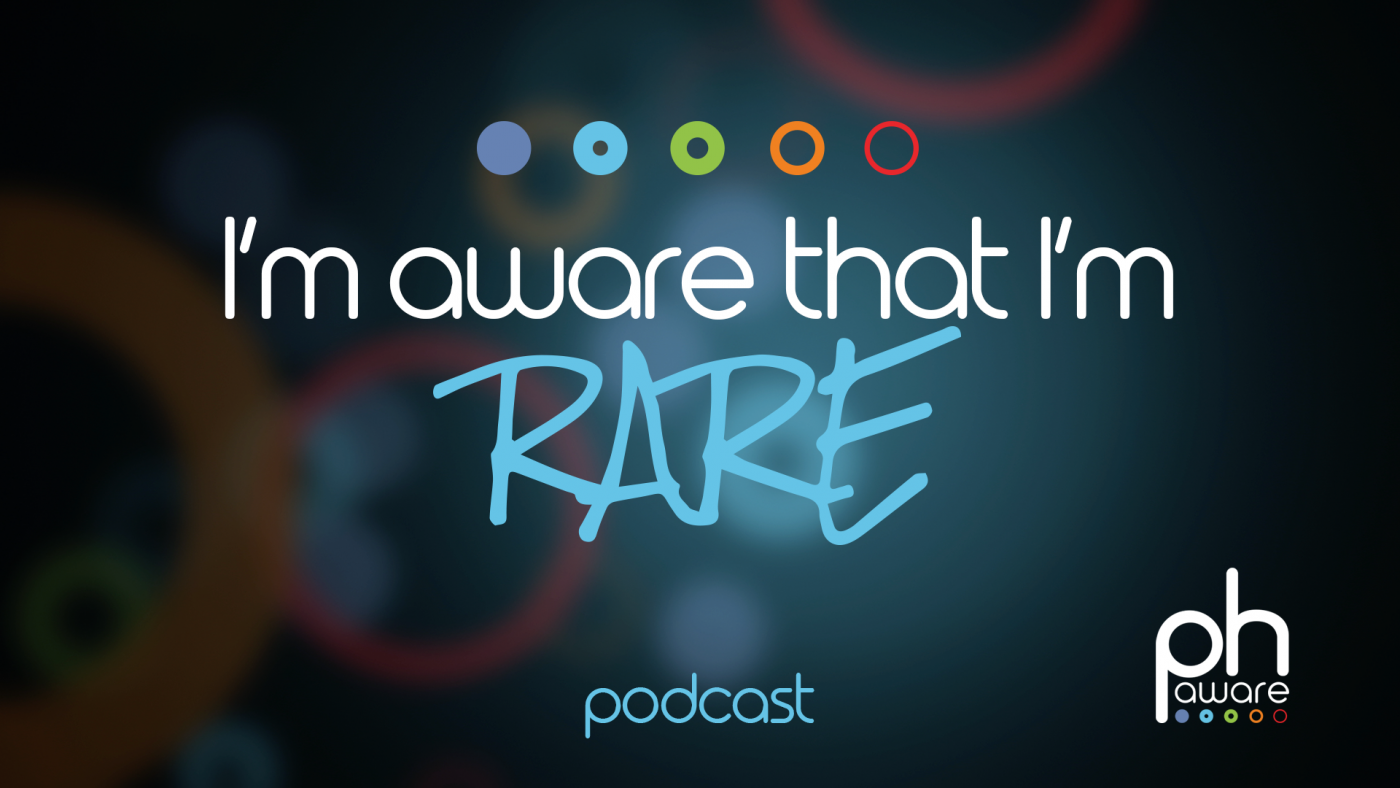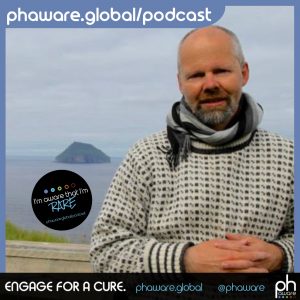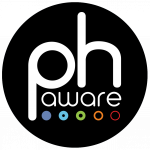Phaware Podcast: Hall Skåra

This podcast series, created and produced by phaware, is being offered as a regular guest feature on Pulmonary Hypertension News to bring the voices and life experiences of PH patients, family members, caregivers, healthcare specialists, and others to our readers. You may listen to the podcast directly, or read it via the transcript that runs below.
I’m Aware That I’m Rare: Hall Skåra
The phaware™ interview

Hall Skåra is a pulmonary hypertension patient from Norway. He became part of PHA Europe’s staff after his diagnosis. He has helped develop its “White Spots” program, which establishes new PH patient associations in countries where they don’t exist. Hall discusses how his love of competitive sports led him to becoming a Norwegian backgammon champion and the special way he uses that title to raise PH awareness.
My name is Hall Skåra. I’m 58 years old. I’m from Norway. I originally came from the west coast of Norway, but now I live in Oslo,  the capital of Norway.
the capital of Norway.
It started with me having irregular heartbeats. I guess you call them atrial fibrillations. In 2002 and 2003 they became almost chronic. I had a procedure called heart ablation to correct this. It did correct my irregular heartbeats but I was starting to feel short of breath afterwards.
Then, I went to the doctor and complained about shortness of breath. He sent me to the local hospital. They did a bicycle test with me and to my surprise I bicycled as was expected for a man my age. I think the problem was that I was in better shape than the average person before I got sick. Then, I felt something was wrong but still they couldn’t detect it, because I was still at the average exercise level at that point. It took about two years and I got gradually worse.
I went to the doctor again. He sent me back and this time I met with a lung specialist. He put an oximeter on my finger and we walked from the bottom of the hospital and took the steps up to the top. Then, he saw that my O2 dropped dramatically. So he saw something was wrong. He sent me to the national hospital in Oslo. There it only took a day or two and I got my [pulmonary hypertension] diagnosis. When I was at the local hospital before they sent me to the main hospital; they had some suspicions of what this could be and one of these suspicions was PH.
Of course, I went home and looked it up on the internet. It was not pleasant reading. When I was diagnosed with PH at the national hospital, it was quite depressing. But my reaction when I recall, it was not so much of depression. It was more of anger. Actually, I was angry at my own body because I had always treated it well. I had been exercising. I had been eating the right food. I was not overweight. I never smoked. I was very cautious with alcohol. I was angry because the way my body responded was by giving me a serious and chronic illness. My first reaction was anger. Then after a couple of days, it was replaced by determination that I would live with this disease, I would live long with it, and I would live well with it.
Norway is a small country. Actually, geographically it’s fairly big, but when it comes to the number of citizens it’s about five million. As you might expect, we don’t have too many PH patients. My suspicion is that it’s about 200 PAH patients. When I talked to the doctor, they also suspect that we have about 200 people in the country that have PAH that have not yet been diagnosed.
In Norway, we have universal healthcare. So everything is paid through our taxes. It’s a very good system. We get excellent treatment. All the drugs that are approved by the EMA in Europe are also available in Norway. Most patients, they go on a double or triple therapy and it’s free of charge. So our healthcare system is excellent. Actually, if you look at the ratings of best countries to live in by the UN, I think we are top five out of the six last years. This year, Norway was rated as the country where people were most happy in the world.
I guess in psychology they talk about seven stages you go through. Then the last stage is the acceptance stage. In my case, I went through these stages very quickly and I reached the acceptance stage in a matter of a couple of days. What I realized at that point was that I need to take charge and I needed to try to learn as much as I could about this disease, and I needed to learn how to live with this disease so I could live a good and fulfilling life. One of the first things I did was I searched the net to see if I can find other patients because, of course, when you go to the hospital, the doctors are not allowed to give information about other patients. So I needed to find that myself.
I found that we did not have a patient association in Norway. But I found a German patient that had lived [with PH] for, I think, 10–11 years at that point. He seemed very knowledgeable. His name was Rolf. Then, I contacted him and eventually invited him to Norway so I could learn as much as possible from him. He gave me a lot of tips and advice on how to live with this disease. Rolf is now one of my close friends and he’s been to Norway several times. I’ve been to Germany. He’s become a Norwegian lover, if you can say that. He loves to come to Norway and he loves learning the language. So he goes on language courses in Germany. After talking to him, it made me realize that talking to a patient is very different than talking to a doctor and it’s very valuable.
I wanted to share this with the other Norwegian patients. Because I have a background in the computer industry, it was easy for me to set up some webpages and some online forums. I did so, and then in a matter of a few weeks then I started meeting other Norwegian PAH patients. Then we formed the Norwegian patient association. We are a small association. We only have about 50, 55 members. When it comes to associations in Norway, it’s really discouraged to have small associations. So it’s a lot of benefit for us to be part of a bigger association. So I went around to different associations to see which one would fit us the best, and I ended up with the Heart and Lung Association. That’s a very big association with about 55,000 members. So they have great power and they talk to the health minister of Norway and so on. But we are defined as an interest group in this big association and have great independence. We have our own webpages and all this. But anything to do with financing and so on is all taken care of by the big Heart and Lung Association.
We have many purposes with our association. One is to help people that are diagnosed, to help them find other patients and interact with other patients, to give them knowledge about PAH and so on. Another very important part of our association is to create awareness of PAH because in Norway as in all countries in the world, we have a problem with people being undiagnosed. So we work together with the pharmaceutical industry because we have a common goal here, to find patients as early as possible so that we can get them on medication. In this way, they will have a better outlook on life, meaning they will live longer and they will also have better life quality.
World PH day is May 5 every year, and we take part of this in Norway. Last year we had something called the Backwards Games where we did sports events backwards, so we would run backwards. We would throw a ball backwards. We would do triple jump backwards and so on. The whole thinking behind this [is] that, when a doctor sees a patient that is short of breath, he has to think a little backwards, not think that it’s the common thing like asthma or people simply being out of shape, but it might actually be PH.
Once I was diagnosed, I realized I needed to change my life a little. I used to be very physically active. Before I would go biking. Now I go biking with an electric bike. Before I would go running and now I go walking. Also, I used to play squash and I was quite competitive. I liked the competition part of it. So I thought I needed to find a sport that I can do where I don’t have to rely on my lungs. So I started playing backgammon, the board game. I became quite involved in the sport, if you can call it a sport. I was the president of the Norwegian Backgammon Association for a while. Still am. Then six years after I started playing, I became Norwegian champion. The newspapers picked up this and they wanted to interview me. Then as they interviewed me, I had a chance to talk about why I became interested in backgammon and talked about PH. The story that was in the paper was half about me playing backgammon but also the other half was about PH and it created a lot of awareness.
This is the thing that I often think about is how can I create awareness about the disease. I try to do this by all possible means. For instance, with my backgammon board, I had a board specially designed in Turkey and shipped to Norway. The board has the colors of the PHA Europe logo and it has the PHA Europe logo printed on it and also my name and diagnosed 2005. When I sit down and play backgammon, the first thing my opponent would ask is what is this all about. Then I have a chance to talk about PH. So I use every opportunity to talk about PH to create awareness. I know for a fact that if any of Norwegian backgammon players ever started feeling symptoms or any of the people that they know, their close family or something started having symptoms of PH, they for sure will get an early diagnosis.
Once you get a disease like PH, which is chronic and serious, it’s very easy to become depressed. But I tried to turn it around the other way and not get depressed by it. One of the things I do is I don’t think about things that I can’t do anymore. On the contrary, I think about all the things I can do. Because even though you’re sick, you can do a lot of stuff and you can have a great quality of life. By turning things a little bit upside down, I’m able to have a great quality of life and, actually, I think maybe my life quality might even be better now than it was before I got sick.
My name is Hall Skåra and I’m aware that I’m rare.
EVERYBODY HAS A STORY. WHAT’S YOURS?
phaware wants to share your pulmonary hypertension story with their engaged global audience. Whether you are a patient, caregiver, or medical professional, they are enlisting PH community members from across the globe. Visit www.phaware.global/podcast to share your story and to be considered for a future episode.And learn more about pulmonary hypertension at www.phaware.global. #phaware #phawarepod
Note: Pulmonary Hypertension News is strictly a news and information website about the disease. It does not provide medical advice, diagnosis, or treatment. This content is not intended to be a substitute for professional medical advice, diagnosis, or treatment. Always seek the advice of your physician or other qualified health provider with any questions you may have regarding a medical condition. Never disregard professional medical advice or delay in seeking it because of something you have read on this website. The opinions expressed in this column are not those of Pulmonary Hypertension News or its parent company, Bionews Services, and are intended to spark discussion about issues pertaining to pulmonary hypertension.









Leave a comment
Fill in the required fields to post. Your email address will not be published.